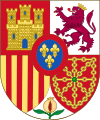Spain in the Middle Ages
In many ways, the history of Spain is marked by waves of conquerors who brought their distinct cultures to the peninsula. After the passage of the Vandals and Alans down the Mediterranean coast of Hispania from 408, the history of medieval Spain begins with the Iberian kingdom of the Arianist Visigoths (507–711), who were converted to Catholicism with their king Reccared in 587. Visigothic culture in Spain can be seen as a phenomenon of Late Antiquity as much as part of the Age of Migrations.
From Northern Africa in 711, the Muslim Umayyad Caliphate crossed into Spain, at the invitation of a Visigothic clan to assist it in rising against King Roderic. Over the period 711-788, the Umayyads conquered most of the lands of the Visigothic kingdom of Hispania and established the territory known as Al-Andalus. A revolt during the conquest established the Christian Kingdom of Asturias in the North of Spain.
Much of the period is marked by conflict between the Muslim and Christian states of Spain, referred to as the Reconquista, or the Reconquest (i.e.: The Christians "reconquering" their lands as a religious crusade). The border between Muslim and Christian lands wavered southward through 700 years of war, which marked the peninsula as a militarily contested space. The medieval centuries also witnessed episodes of warfare between Spain's Christian states. Wars between the Crown of Aragon and the Crown of Castile were sparked by dynastic rivalries or disagreements over tracts of land conquered or to be conquered from the Muslim south.
The Middle Ages in Spain are often said to end in 1492 with the final acts of the Reconquista in the capitulation of the Nasrid Emirate of Granada and the Alhambra decree ordering the expulsion of the Jews. Early Modern Spain was first united as an institution in the reign of Charles V, Holy Roman Emperor as Charles I of Spain.
Early medieval Spain
When the Germanic peoples invaded the provinces of the Roman Empire, the hordes, urged forward by the pressure of the Huns in their rear, hurled themselves for the first time upon the Pyrenean Peninsula – the Alani, a people of Scythian, or Tatar, race; the Vandals and Suebians, Germanic races. The Alani were, for the most part, quickly brought into subjection. The Vandals, after establishing themselves in Baetica, to which they gave the name of Vandalusia (Andalusia), passed on into Africa, while the Visigoths hemmed in the Suebi in Galicia until the latter were completely brought under control. These Visigoths, or Western Goths, after sacking Rome under the leadership of Alaric (410), turned towards the Iberian Peninsula, with Athaulf for their leader, and occupied the northeastern portion. Wallia extended his rule over most of the peninsula, keeping the Suebians shut up in Galicia. Theodoric I took part, with the Romans and Franks, in the Battle of the Catalaunian Plains, where Attila was routed.[1]
Euric (466), who put an end to the last remnants of Roman power in the peninsula, may be considered the first monarch of Spain, though the Suebians still maintained their independence in Galicia. Euric was also the first king to give written laws to the Visigoths. In the following reigns the Catholic kings of France assumed the role of protectors of the Hispano-Roman Catholics against the Arianism of the Visigoths, and in the wars which ensued Alaric II and Amalaric lost their lives.[1]
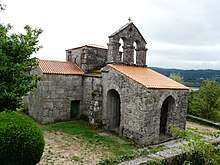
Athanagild, having risen against King Agila, called in the Byzantine Greeks and, in payment for the succour they gave him, ceded to them the maritime places of the southeast (554). Liuvigild restored the political unity of the peninsula, subduing the Suebians, but the religious divisions of the country, reaching even the royal family, brought on a civil war. St. Hermengild, the king's son, putting himself at the head of the Catholics, was defeated and taken prisoner, and suffered martyrdom for rejecting communion with the Arians. Reccared, son of Liuvigild and brother of St. Hermengild, added religious unity to the political unity achieved by his father, accepting the Catholic faith in the Third Council of Toledo (589). The religious unity established by this council was the basis of that fusion of Goths with Hispano-Romans which produced the medieval Spanish nation.[1]
Sisebut and Suintila completed the expulsion of the Byzantines from Spain. Chindasuinth and Recceswinth laboured for legislative unity, and legalized marriages, hitherto prohibited, between Goths and Latins. After Wamba, famous for his opposition to his own election, an unmistakable decline of the Gothic monarchy set in. Manners were relaxed, immorality increased, and Wittiza has stood in Spanish history for the type of that decay which, in the next reign, that of Roderic (710–12), ended in the ruin of the kingdom.[1]
Medieval Islamic Spain
For specific medieval Muslim dynasties, see:
- Umayyad Dynasty in Spain:
- Umayyad Emirate of Cordoba, 756–912 (929)
- Abd ar-Rahman I, 756–88
- Hisham I, 788–96
- al-Hakam I, 796–822
- Abd ar-Rahman II, 822–52
- Muhammad I, 852–86
- al-Mundhir, 886–88
- Abdallah ibn Muhammad, 888–912
- Abd ar-Rahman III, 912–29
- Umayyad Caliphate of Cordoba, 929–1031
- Abd ar-Rahman III, as caliph, 929–61
- Al-Hakam II, 961–76
- Hisham II, 976–1008
- Muhammad II, 1008–09
- Suleiman, 1009–10
- Hisham II, restored, 1010–12
- Suleiman, restored, 1012–17
- Abd ar-Rahman IV, 1021–22
- Abd ar-Rahman V, 1022–23
- Muhammad III, 1023–24
- Hisham III, 1027–31
- Umayyad Emirate of Cordoba, 756–912 (929)
- Taifa kingdoms
Medieval Christian Spain
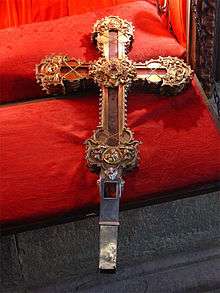
.jpg)
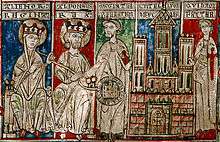
An organizing principle of medieval Spain was the Reconquista, the Crusade by which territories that had once been Christian and Visigothic were recaptured and Christianized. Rodrigo Diaz de Vivar was mythologized as the virtuous El Cid and is remembered as instrumental in this effort. For Medieval Northern (Christian) Spain see individual kingdoms and polities such as: Kingdom of Asturias, Kingdom of Galicia, Marca Hispanica, Kingdom of Aragon, Catalan counties, Principality of Catalonia, Kingdom of Pamplona/Navarre, Kingdom of León, Kingdom of Castile, Lordship of Biscay, Kingdom of Valencia, Kingdom of Majorca, Crown of Aragon or Crown of Castile.
The Reconquest
All the elements of the Spanish people already existed in the Kingdom of the Catholic Goths; the Latinized Celtiberian race, or Hispano-Romans, the Gothic element, and the Catholic faith. These elements, however, were as yet uncombined, and still lacked that thorough fusion which was to make one people out of them, with a character and historical destiny of its own. The Muslim invasion encouraged the Goths and Hispano-Romans, in the mountains of the north, became one people with one religion and one national aspiration, to reconquer their Spanish fatherland and make the Cross triumph over the Crescent.[1]
Though already morally a unit, the Spanish people were still eight centuries away from political unity, and the Reconquest was begun from four distinct centres. Chief among these four centres was Asturias. The fugitive Goths found a retreat in those mountains where the Romans had never been able to effectively establish their authority; only a few years after the Battle of Guadalete, they gained a victory over Al Qama in the portentous Battle of Covadonga. Don Pelayo, or Pelagius, the Gothic chieftain who was victor at Covadonga, was acclaimed king, and took up his residence at Cangas de Onís. His son Favila was killed while hunting, torn to pieces by a bear, and was succeeded by Alfonso I, son-in-law of Don Pelayo, who set about pushing the Reconquest as far as Galicia and Tierra de Campos (the "Gothic Fields" or Campos Góticos).[1]
Fruela I (727–728) founded Oviedo. He was assassinated, and was succeeded by several petty kings (Aurelius, Silo, Mauregato, and Bermudo I, the Deacon) and at last Alfonso II, the Chaste, who set up his court at Oviedo, recommenced the great expeditions against the Muslims, and seems to have invited Charlemagne to come to Asturias, thus occasioning the Frankish monarch's expedition which ended in the disaster of Roncevaux. The Vikings invaded Galicia in 844 but were expelled by Ramiro I from A Coruña. 70 Viking ships were captured and burned.[2] Vikings returned to Galicia in 859, during the reign of Ordoño I. They were faced with an army led by Don Pedro who dispersed them and destroyed 38 of their ships. Alfonso III, the Great, continued the forays as far as the Sierra Morena, and founded Burgos, the future capital of Castile. His sons rebelled against him, and he abdicated the crown, dividing his dominions among them. With him ended the Kingdom of Asturias, the territory of which soon became subject to León.[1]
Another rallying-point of the Reconquest was Aragón; the other two, Navarre and Catalonia, were placed by the circumstances of their origin in peculiar relations with France. The Basques on either side of the Western Pyrenees dissatisfied with Frankish rule, rebelled on several occasions. At Roncevaux they annihilated the forces of Charlemagne, and in 824 another victory secured the independence of the Basques of Pamplona. The names and dates of their kings, or chieftains, are very uncertain until we come to Sancho II, Abarca. He abdicated in favour of his son, García II, the Trembler, in whose time the Leónese and Navarrese together were routed at Valdejunquera.[1] Sancho III, the Great, was one of the monarchs who most influenced Spanish history; he was eventually King of Navarre, Castile, Aragón, and Sobrarbe. At his death (1035) he divided his kingdoms, giving Navarre to his eldest son García, Castile, with the title of King, to Fernando, Aragón to Ramiro, and Sobrarbe to Gonzálo. This fashion of regarding the various states as patrimonial possessions – an idea borrowed from French feudalism, and previously unknown in the Spanish kingdoms – was introduced at this time; it resulted in the numerous divisions which led to so many wars and which long formed an obstacle to the unity of the Reconquest in the West.[1]
The Unification of Spain
Several difficulties stood in the way of the union of the various states formed in Spain by the Reconquest; the diversity of its points of departure was the principal. Navarre and Catalonia were in particularly close contact with France, and the marriage of Ramón Berenguer the Great with Dulcia, heiress of Provence, made the relations between the peoples of the langue d'oc so close that the subsequent development of Catalonia was connected rather with that of the South of France. In Navarre, again, when the dynasty of Sancho the Elder became extinct, the Crown passed in succession to the houses of Blois (1234), of France, and of Évreux (1349–1441), with the result that Navarre, until the fifteenth century, lived in much closer relations with the French monarchy than with the Spanish states. On the other hand, the feudal usages introduced in the Western Kingdoms by the House of Navarre brought about repeated partitions of states. Ferdinand I divided his kingdom into five parts, Castile, León, Galicia, Zamora, and Toro, though, in the event his son Sancho the Strong despoiled his brothers and restored the kingdom to unity. But Alonso VII, the Emperor, again separated Castile and León, leaving the former to his son Sancho, and the latter to Ferdinand.[1]
Another result of feudal customs introduced by the Burgundian princes was the separation of Portugal. For Alfonso VI gave his daughters Urraca and Teresa in marriage to Raymond and Henry of Burgundy, who founded two dynasties: that of Portugal, and that of Castile and León, which began with Alfonso VII. The Kingdoms of Asturias, Galicia, León, and Castile were definitively united under St. Ferdinand, heir of León through his father Alfonso IX, and of Castile through his mother Berenguela. In the same way Catalonia and Aragón were definitively united by the marriage of Ramón Berenguer, the Saint, with Doña Petronila, daughter of Ramiro, the Monk, of Aragón, of whom legend says that he made the famous "Bell of Huesca" out of the heads of rebellious nobles. These three rebellious states, to which the divisions of the peninsula had been reduced, completed the Reconquest; they were not united, to form Iberian national unity, until three centuries later.[1]
The kingdom formed by the union of Aragón and Catalonia was the first to complete that portion of the Reconquest which the geographical conditions assigned to it; then it directed its strength eastward. Peter II, the Catholic, sovereign of Aragón and Catalonia, went to Rome to seek the annulment of his marriage with Maria of Montpellier, and to have himself crowned by the pope. The former purpose he failed to accomplish; the latter occasioned him a great deal of trouble, as the Aragónese nobles refused to recognize the position of vassalage to the Holy See in which Peter had placed his kingdom. These nobles then forced for the first time that union, or confederation, which was the cause of such serious disturbances until Peter IV with his dagger cut in pieces the document which recorded it. Peter II, the Catholic, fell in the Battle of Muret (1213), defending his Albigensian kinsmen against Simon de Montfort, whom Innocent III had sent against them. His son, James I, the Conqueror, completed the Catalan-Aragónese Reconquest, winning Majorca (1228) and Valencia (1238) besides helping his son-in-law, Alfonso X, the Wise, to complete the conquest of Murcia. His son and successor gave a new direction to Catalan-Aragónese policy by enforcing the rights of his wife, Constance, to the kingdoms of Sicily and Naples. Profiting by the rising of the Sicilian Vespers against the Angevins (1282), he possessed himself of Sicily and attacked Naples.[1]
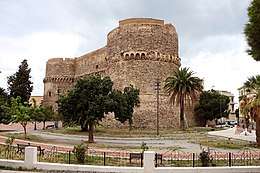
This conquest, however, placed the kings of Aragón in a position of antagonism with the popes, who defended the rights of the House of Anjou. Martin IV having excommunicated Peter III, the Aragónese nobles took advantage of the fact to extend their privileges at the expense of the royal power. The demands of the nobles increased in the reign of Alfonso III, who was forced to confirm to them the famous Privilegio de la Union. James II became reconciled with the Holy See, accepting Corsica and Sardinia in lieu of Sicily. Peter IV, the Ceremonious, defeated the nobles at Epila (1348) and used his dagger to cut in pieces the charter they had extorted from his predecessors. In the meantime the Catalans and Aragónese who were left in Sicily offered themselves to the Emperor Andronicus Palaeologus to fight the Turks. Having conquered these, they turned their arms against the Greeks, who treacherously slew their leaders; but for this treachery the Spaniards, under Bernard of Rocafort and Berenguer of Entenca, exacted the terrible penalty celebrated in history as "The Catalan Vengeance" and moreover seized the Duchies of Athens and Neopatras (1313). The royal line of Aragón became extinct with Martin the Humane, and the Compromise of Caspe gave the Crown to the dynasty of Castile, thus preparing the final union. Alfonso V, the Magnanimous, once more turned Aragónese policy in the direction of Italy, where he possessed the Kingdom of Sicily and acquired that of Naples by having himself made adoptive son of Queen Joanna. With these events began the Italian wars which were not to end until the eighteenth century.[1]
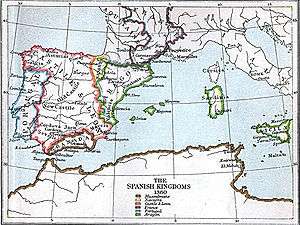
Meanwhile the Reconquest languished in Castile; at first, because of the candidacy of Alfonso X for the crown of the Holy Roman Empire, in which candidacy he had secured a majority of the electoral princes. This was followed by a disputed succession to the throne, the rival claimants being the Cerda heirs (sons of Fernando, the eldest son of Alfonso X) and the second son of Sancho IV. Next came the minorities of Ferdinand IV, Alfonso XI, Henry III, and John II, and fresh civil strife in the reigns of Pedro the Cruel and of Henry IV. Ferdinand IV succeeded to the throne at the age of nine, being under the tutelage of his mother María de Molina. Alfonso XI was little more than one year old when his father died (1312); and though his reign was in many respects glorious, and he overcame the Marinids in the Battle of Río Salado (1340), still his amours with Eleanor de Guzmán, by whom he had several children, resulted in the wars of the following reign, that of Pedro the Cruel, who was at last slain by his bastard brother, Henry of Trastámara, and succeeded on the throne by him under the title of Henry II. John I, who married Beatrice of Portugal (1383), sought to unite the two kingdoms on the death of Ferdinand, the last King of Portugal of the Burgundian line. The Portuguese, however, defeated John of Castile at the Battle of Aljubarrota, and the Portuguese Crown went to the Master of Aviz, who became John I of Portugal (1385). Henry III, who married Catherine of Lancaster, was the first to take the title of Prince of Asturias as heir to the Crown, which he inherited during his minority, as did his son, John II.[1]
National unity was eventually attained by the most unexpected means: Isabella of Castile, who was not the heiress of Henry IV, married Ferdinand of Aragón, who was not the heir of John II, and the tragic death of the Prince of Viana, on the one hand, and, on the other hand, the no less tragic fate of Joanna la Beltraneja contributed to a result which no doubt entered into the designs of Providence.[1]
Medieval Spanish culture
In the post-Roman period before 711, the history of the Spanish language began with Old Spanish; the other Latin-derived Hispanic languages with a considerable body of literature are Catalan (which had a relevant golden age of Valencian), and to a lesser degree Aragonese. Asturian Medieval Spanish, Galician and Basque languages were primarily oral.
Main Spanish cities in the Middle Ages
Medieval Spain was as much as a network of cities as it was interconnected provinces. Cities were cultural and administrative centers, the seats of bishops and sometimes kings, with markets and housing expanding from a central fortified stronghold. Medieval Spanish history can easily be followed through these major cities:
- Barcelona
- Bilbao
- Burgos
- Córdoba
- Granada
- León
- Málaga
- Murcia
- Oviedo
- Salamanca
- Santander
- Seville
- Toledo
- Valencia
- Valladolid
- Zaragoza (Saragossa)
and at the great shrine of Santiago de Compostela.
See also
| Wikimedia Commons has media related to Medieval Iberia. |
References
- Herbermann, Charles, ed. (1913). . Catholic Encyclopedia. New York: Robert Appleton Company.

- Haywood, John. Northmen.
Further reading
- The Art of medieval Spain, A.D. 500-1200. New York: The Metropolitan Museum of Art. 1993. ISBN 0870996851.
- Linehan, Peter (1993). History and the Historians of Medieval Spain. Oxford, UK: Clarendon Press. ISBN 9780198219453.
- O'Callaghan, Joseph F. (1975). A History of Medieval Spain. Ithaca, NY: Cornell University Press. ISBN 9780801492648.
